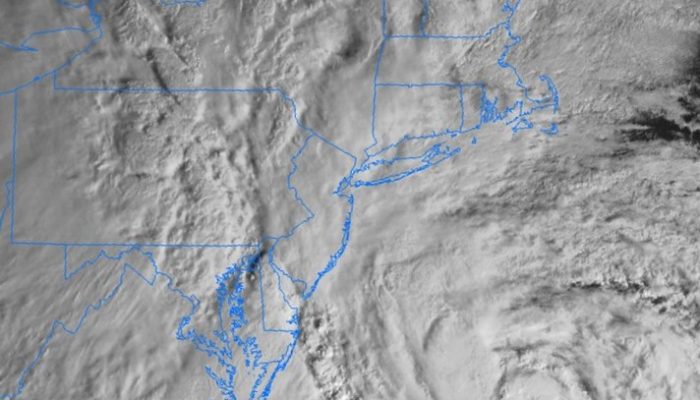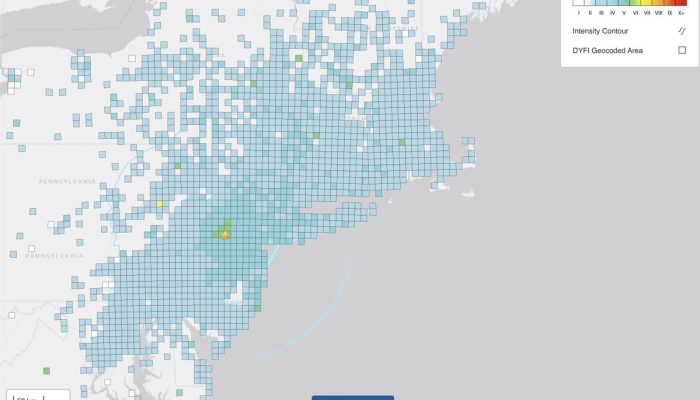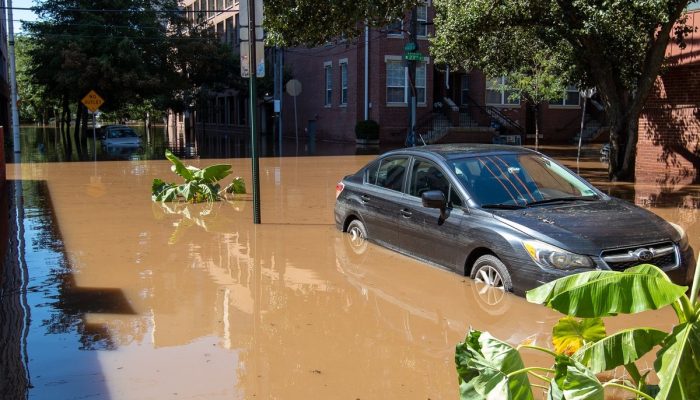May 2, 2020
The week of May 3rd is National Hurricane Preparedness Week, a time to review how prepared you are before Atlantic hurricane season arrives June 1st.
Philadelphia feels the effect of these powerful storms because of its location to the Atlantic Coast and the Delaware Bay.
There are simple steps you can take now to be prepared for powerful storms, not only hurricanes, that can help you be ready to react and recover.
Keep in mind, you may need to adjust any preparedness actions based on the latest health and safety guidelines from the CDC and local officials.
Local Impact
Our Hazard Mitigation Plan shows the city experiences major impacts from remnant storms, like Tropical Storm Agnes or Tropical Storm Lee, or storms that are no longer purely tropical, like Superstorm Sandy. Most of the city’s biggest flooding events were due to tropical storms.
- These severe storm’s high winds cause power outages that can last for long periods. The highest wind ever recorded in Philadelphia was during Hurricane Hazel in 1954 when wind reached 94 miles per hour and knocked out power for days.
Flooding associated with the storm can be fatal. It also impacts the economy, disrupts travel, and damages property.
Pennsylvania is one of the most flood prone states in the United States.
- National Weather Service: An average of 46 people per year die during hurricanes. 84 per year from flooding.
- National Oceanic and Atmospheric Administration: flooding was greatest natural hazard cause of property loss in Pennsylvania at a cost of $91.6 million per year from 1996 to 2014.
Although some parts of the city, like Germantown, Manayunk, Eastwick, and Cobbs Creek, come to mind when thinking of flooding, it is a city-wide hazard. That is why City agencies formed the Flood Risk Management Task Force to improve strategy for flood management and risk reduction planning.
Definition
Hurricanes are violent storms that bring high winds, heavy rain, swollen rivers, and sea storm surges.
These storms are tropical cyclones and become a hurricane when winds reach 74 miles per hour.
For a hurricane to form, they need warmer ocean water.
- The Atlantic hurricane season is from June 1st through November 30th. Most hurricanes in Philadelphia have occurred in August and September.
- The International Code Council, an association that develops structure building safety standards, classifies Philadelphia as bordering a hurricane-prone area.
Hurricane ratings are based on wind speed. The lowest, a Category 1, has dangerous, damaging winds. A Category 5 sees catastrophic wind speeds of at least 157 miles per hour.
This rating scale is not the only way to measure a storm’s power and potential for damage to inland locations such as Philadelphia.
Checklist
- Stay connected to important information. Sign up for ReadyPhiladelphia alerts.
- Create a Family Emergency Plan that includes the possibility of evacuation. Take the needs of all in your house into consideration, including your pets. Check in with neighbors that may need help.
- If you need to evacuate, you will have to leave your home quickly. Decide now where you can go and what you will need to take with you in your Go Bag.
- If you stay home and shelter-in-place, conditions may require you to seek protection in your home, place of employment or other location when disaster strikes. Having a 3 day supply of non-perishable food and water are just part of building your Shelter-in-Place kit. Have enough supplies for you and your family in case power is out for days or roads are flooded or blocked.
- Keep your important documents safe. If your paper files and personal computer are lost or damaged in a fire, flood, or other emergency, your personal information, bank statements, and insurance records could be destroyed. Make copies of ID, social security cards, passports, banking, and insurance documents. Take photos and store digitally or put them in you Go Bag or water-proof Shelter-in-Place kit.
- Be prepared for power outages. Know what to have in your home and how to report and track power outages and downed trees.
- Find flood gauge information to monitor creek and river levels near you.
- If you’re a business owner, have a Business Continuity Plan in place. An emergency, such as a hurricane, can close your doors permanently. Federal statistics say up to 40% of businesses never recover after a major disaster. Be Ready. Stay Open.
- Watch high winds. Secure loose objects, including; trashcans, recycling containers, patio furniture, and outdoor signage at business properties or construction sites. Philadelphia’s Department of Licences & Inspections urges construction sites to use extreme caution and secure loose materials, especially those on the upper floors of buildings under construction. Temporary fencing, signage and tarps at constructions sites must be secured.
- Be insured, ask your insurance company for a check-up. The cost of flood insurance can be a drop in the bucket compared to the cost of flood damage.
- Make sure you have enough homeowners or renter’s insurance for your residence. Standard homeowners insurance does not cover flooding. Whether you’re a homeowner or renter, you’ll need a separate policy for it, and it’s available through your company, agent or the National Flood Insurance Program.
- Flood insurance requires a 30-day wait period, so act before the storm. Not all insurance policies are the same.
- Coverage amounts, deductibles, and payment caps can vary significantly. Talk with your insurance provider to find what fits you best.




